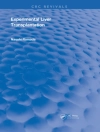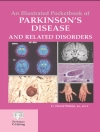This book serves as a practical resource for pain medicine providers. It presents important clinical concepts while covering critical pain medicine fundamentals. Chapters were carefully chosen to cover common aspects of clinical pain medicine and also follow a common format to facilitate quick look-up. Each chapter includes a concise discussion of the latest supporting evidence as well as relevant case scenarios. The coverage is clinically and board relevant, evidence-based and up-to-date. It will appeal to residents preparing for the written board examination and practitioners preparing for board re-certification, which now occurs every 10 years. Beyond these groups, the book has the potential to appeal to learners and practitioners around the world; pain medicine is burgeoning globally, and there is great need for concise, clinically relevant resources.
Daftar Isi
Part I: General.- 1 Anatomy and Physiology: Mechanisms of Nociceptive Transmission.- 2 Pharmacology of Pain Transmission and Modulation.- 3 Development of Pain Systems.- 4 Peripheral and Central Sensitization.- 5 Designing, Reporting, and Interpreting Clinical Research Studies.- 6 Animal Models of Nociception and Pain.- 7 Ethical Standards in Pain Management and Research.- 8 Epidemiology.- Part II: Assessment and Psychology of Pain.- 9 Pain Assessment.- 10 Physical Exam of the Cranial Nerves.- 11 Neck Exam.- 12 Shoulder.- 13 Elbow.- 14 Abdomen.- 15 Low back.- 16 Hip.- 17 Knee.- 18 Ankle.- 19 Vascular.- 20 Dystonia.- 21 Pain Assessment Tools.- 22 Functional Assessment Tool.- 23 Placebo and Pain.- 24 Cervical Spine Imaging: Normal Anatomy and Degenerative Disease.- 25 Electrical Nerve Stimulation.- 26 Quantitative Sensory Testing: QST.- 27 Lumbar Spine Imaging: MRI.- 28 Trigeminal Nerve Imaging.- 29 Lumbar Spine Imaging: X-ray and CT.- 30 Lumbar Spine Imaging: Myelography.- Part III: Psychology.- 31 Chapter 32: Psychosocial and Cultural Aspects of Pain.- 32 Chapter 33: Sex and Gender in Pain.- Part IV: Addiction.- 33 Addiction.- 34 Addiction: Substance Abuse.- Part V: Treatment of Pain.- 35 Pharmacology of Pain Transmission and Modulation.- 36 Short-acting Opioids.- 37 Long-acting Opioids.- 38 Methadone.- 39 Buprenorphine.- 40 Nonsteroidal Anti-Inflammatory Medications.- 41 Acetaminophen.- 42 Tricyclic Antidepressants.- 43 Selective Serotonin Reuptake Inhibitors.- 44 Serotonin-Norepinephrine Reuptake Inhibitors.- 45 Atypical Antipsychotics.- 46 Benzodiazepines.- 47 Anticonvulsants.- 48 Muscle Relaxants.- 49 Local Anesthetics.- 50 Corticosteroids.- 51 Immunoglobulin G.- 52 NMDA antagonists.- 53 Antihistamines.- 54 Sympatholytic Agents.- 55 Miscellaneous Adjuvant Analgesics.- 56 Serotonin Syndrome.- Part VI:Psychological Treatments.- 57 Cognitive-Behavioral Therapy.- 58 Behavioral Interventions.- 59 Psychiatric Co-morbidities Treatments.- 60 Stimulation-produced Analgesia.- Part VII: Interventional Pain Management.- 61 Lumbar Epidural Steroid Injection.- 62 Transforaminal Epidural Injection- 63 Cervical Facet Injections.- 64 Thoracic Facet Injection.- 65 Lumbar Facet Block.- 66 Lumbar Medial Branch Radiofrequency Lesioning.- 67 Sacroiliac Joint Injection.- 68 Sacroiliac Joint Radiofrequency Ablation.- 69 Lumbar, Thoracic, and Cervical Discography.- 70 Epidural Blood Patch.- 71 Onabotulinumtoxin A Injections for Chronic Migraine.- 72 Spasmodic Torticollis/Cervical Dystonia (CD).- 73 Occipital Nerve Block.- 74 Supraorbital Nerve Block.- 75 Auriculotemporal Nerve Block.- 76 Trigeminal Nerve Block.- 77 Gasserian Ganglion Block.- 78 Stellate Ganglion Block.- 79 Celiac Plexus Block.- 80 Lumbar Sympathetic Block.- 81 Superior Hypogastric Plexus Block.- 82 Ganglion of Impar Injection/Neurolysis.- 83 Brachial Plexus Blocks.- 84 Thoracic Paravertebral Block.- 85 Intercostal Nerve blocks.- 86 Transversus Abdominis Plane (TAP) Block.- 87 Anterior (Abdominal)Cutaneous Nerve Block.- 88 Ilioinguinal Nerve Block.- 89 Genitofemoral Nerve Block.- 90 Lateral Femoral Cutaneous Nerve Block.- 91 Piriformis Muscle Injection (Fluoroscopically-guided).- 92 Sonographically Guided Iliopsoas Injection.- 93 Saphenous Nerve Block.- 94 Pudendal Nerve Block.- 95 Trochanteric Bursa Injection.- 96 Ischial Bursa Injection.- 97 Intra-articular Shoulder Joint Injection (Fluoroscopically-guided).- 98 Intra-articular Hip Joint Injection (Fluoro David V. Dentscopically-guided).- 99 Intra-articular Knee Joint Injection (Fluoroscopically-guided).- 100 Ultrasound-Guided Ankle Joint Injection.- 101 Small Joint Injections.- Part VIII: Surgical Pain Management.- 102 Intrathecal Drug Delivery.- 103 Spinal Cord Stimulation.- 104 Peripheral Nerve Stimulation.- 105 Peripheral Nerve Field Electrostimulation.- 106 Minimally Invasive Ligamentum Decompression (MILD) Procedure.- 107 Vertebroplasty and Kyphoplasty.- 108 Radiofrequency Venous Ablation.- 109 Physical Medicine and Rehabilitation.- 110 Work Rehabilitation.- 111 Complementary, Alternative and Integrative Therapies (CAIT).- Part IX: Clinical States.- 112 Taxonomy of Pain Systems.- 113 Acute Pain.- 114 Cancer Pain: Assessment.- 115 Cancer Pain: Pharmacological Treatment.- 116 Cancer Pain: Interventional Therapies.- 117 Cancer Pain: Palliative Care.- 118 Cervical Radicular Pain.- 119 Neck Pain.- 120 Lumbar Radicular Pain.- 121 Low Back Pain.- 122 Degenerative Lumbar Spinal Stenosis.- 123 Musculoskeletal Pain.- 124 Muscle Pain and Myofascial Pain.- 125 Fibromyalgia.- 126 Piriformis Syndrome.- 127 Carpal Tunnel Syndrome.- 128 Compression Fracture Pain.- 129 Post-thoracotomy Pain Syndrome: PTPS.- 130 Post Mastectomy Pain Syndrome.- 131 Peripheral Vascular Disease.- 132 Chronic Venous Insufficiency.- 133 Sphenopalatine Ganglion: Function and Block.- 134 Phantom Limb Pain.- 135 Visceral Pain Syndrome.- 136 Chronic Urogenital Pain.- 137 Pain in Pregnancy and Labor.- Part X: Headache and Facial Pain.- 138 Migraine Headaches.- 139 Tension-Type Headache.- 140 Cluster Headaches.- 141 Medication Overuse Headaches.- 142 Occipital Neuralgia.- 143 Trigeminal Neuralgia.- 144 Trigeminal Autonomic Cephalalgias (TACs): Cluster Headache, Paroxysmal hemicranias, SUNCT, SUNA.- Part XI: Nerve Damage.- 145 Neuropathic Pain.- 146 Diabetic Neuropathy.- 147 Complex Regional Pain Syndrome.- 148 Post-Herpetic Neuralgia.- Part XII:Special Cases.- 149 Pain in Older Adults.- 150 Words That Hurt, Words That Help!.- 151 How to Communicate with Patients in Pain.- 152 Hypnosis for Pain Relief.- 153 Regenerative Medicine for Pain Management.
Tentang Penulis
Robert Jason Yong, MD, MBA
Brigham and Women’s Hospital/Harvard Medical School
Department of Anesthesiology, Perioperative and Pain Medicine
Michael Nguyen, MD
Brigham and Women’s Hospital/Harvard Medical School
Department of Anesthesiology, Perioperative and Pain Medicine
Ehren Nelson, MD
Brigham and Women’s Hospital/Harvard Medical School
Department of Anesthesiology, Perioperative and Pain Medicine
Richard D. Urman, MD, MBA
Brigham and Women’s Hospital/Harvard Medical School
Department of Anesthesiology, Perioperative and Pain Medicine












